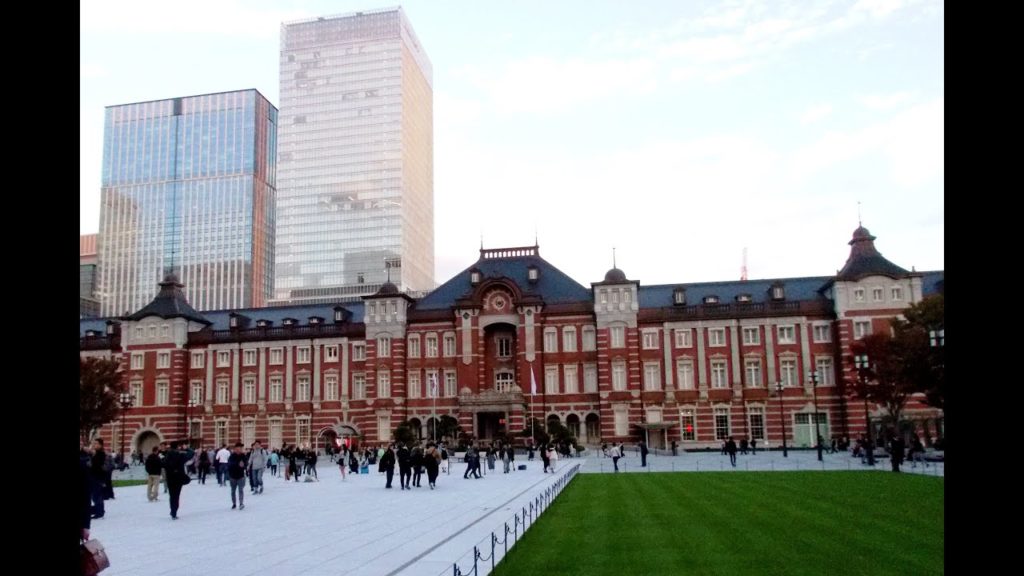Rail transport in Japan is a major means of passenger transport, especially for mass and high-speed travel between major cities and for commuter transport in urban areas.
The Tokyo Metro (東京メトロ, Tōkyō Metoro) is a major rapid transit system in Tokyo, Japan. While it is not the only rapid transit system operating in Tokyo, it has the higher ridership among the two subway operators: in 2014, the Tokyo Metro had an average daily ridership of 6.84 million passengers, while the other system, the Toei Subway, had 2.85 million average daily rides.
Tokyo Metro is operated by Tokyo Metro Co., Ltd. (東京地下鉄株式会社, Tōkyō Chikatetsu Kabushiki-gaisha, Tokyo Subway Stock Company), a private company jointly owned by the Japanese government (through the Ministry of Finance) and the Tokyo metropolitan government.
The company replaced the Teito Rapid Transit Authority (帝都高速度交通営団, Teito Kōsokudo Kōtsū Eidan), commonly known as Eidan or TRTA, on April 1, 2004. TRTA was administered by the Ministry of Land, Infrastructure and Transport, and jointly funded by the national and metropolitan governments. It was formed in 1941, although its oldest lines date back to 1927 with the opening of the Tokyo Underground Railway the same year.
Tokyo Metro also owns a number of commercial developments which mostly consist of shopping developments at major stations. It also owns the Subway Museum near Kasai Station on the Tokyo Metro Tōzai Line which opened on July 12, 1986, and features a few retired trains which once operated on the Ginza and Marunouchi Lines as well as a maintenance vehicle.
The Shinkansen (Japanese: 新幹線, pronounced [ɕiŋkaꜜɰ̃seɴ], lit. ”new trunk line”), colloquially known in English as the bullet train, is a network of high-speed railway lines in Japan. Initially, it was built to connect distant Japanese regions with Tokyo, the capital, to aid economic growth and development. Beyond long-distance travel, some sections around the largest metropolitan areas are used as a commuter rail network. It is operated by five Japan Railways Group companies.
Over the Shinkansen’s 50-plus-year history, carrying over 10 billion passengers, there has been not a single passenger fatality or injury due to train accidents. Starting with the Tōkaidō Shinkansen (515.4 km, 320.3 mi) in 1964, the network has expanded to currently consist of 2,764.6 km (1,717.8 mi) of lines with maximum speeds of 240–320 km/h (150–200 mph), 283.5 km (176.2 mi) of Mini-Shinkansen lines with a maximum speed of 130 km/h (80 mph), and 10.3 km (6.4 mi) of spur lines with Shinkansen services. The network presently links most major cities on the islands of Honshu and Kyushu, and Hakodate on northern island of Hokkaido, with an extension to Sapporo under construction and scheduled to commence in March 2031. The maximum operating speed is 320 km/h (200 mph) (on a 387.5 km section of the Tōhoku Shinkansen). Test runs have reached 443 km/h (275 mph) for conventional rail in 1996, and up to a world record 603 km/h (375 mph) for SCMaglev trains in April 2015.
The original Tōkaidō Shinkansen, connecting Tokyo, Nagoya and Osaka, three of Japan’s largest cities, is one of the world’s busiest high-speed rail lines. In the one-year period preceding March 2017, it carried 159 million passengers, and since its opening more than five decades ago, it has transported more than 5.6 billion total passengers. At peak times, the line carries up to 13 trains per hour in each direction with 16 cars each (1,323-seat capacity and occasionally additional standing passengers) with a minimum headway of three minutes between trains.
Japan’s Shinkansen network had the highest annual passenger ridership (a maximum of 353 million in 2007) of any high-speed rail network until 2011, when the Chinese high-speed railway network surpassed it at 370 million passengers annually, reaching over 1.7 billion annual passengers in 2017.


AloJapan.com